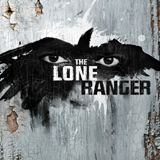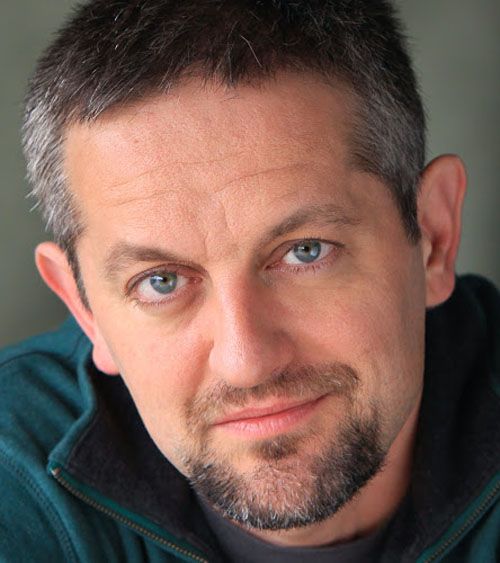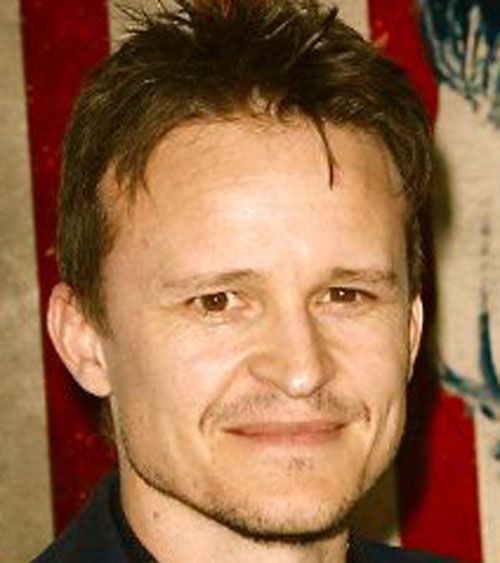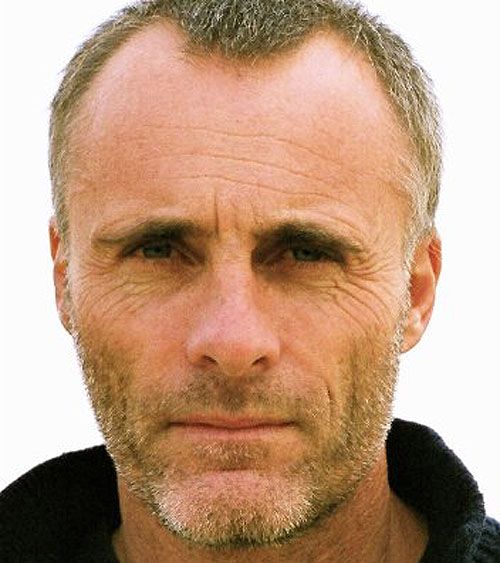More than just a big-screen update of the iconic hero, Disney’s The Lone Ranger is a big movie. Not only have director Gore Verbinski and producer Jerry Bruckheimer taken another questionable property and transformed it into a sweeping adventure, they’ve populated it with one of the most extensive ensemble casts of any film this year. All of which is why the red carpet at The Lone Ranger premiere was an especially busy affair, not simply twisting and turning through the entrance of Disney California Adventure in Anaheim, but filling the park’s streets with cast member after cast member, each of whom was eager to discuss his participation in the highly anticipated blockbuster.
In addition to talking with about their individual roles, character actors Gil Birmingham, JD Cullum, Damon Herriman and Timothy Murphy discussed the increasingly complex depiction of heroes in a world where they seldom wear white hats, and offered some insights into what distinguishes their director from others fearless enough to take on material of such enormous magnitude.
JD Cullum: My character is kind of a sidekick to a guy who might not be the best guy in the world [Latham Cole], played by Tom Wilkinson. I got to spend a lot of time hanging out with him and bonding with him -- as much as you can bond with a guy like me.
Damon Herriman: I play a guy called Ray, and when you see the film you may not know it’s me because I have like four hours of crazy make-up on. But he’s one of the Cavendish gang, the bad guys in the movie, which are headed by Butch Cavendish, played by the brilliant William Fichtner. We’re the guys that the Lone Ranger and Tonto are trying to defeat in the film.
Gil Birmingham: I play the war chief Red Knee, who works side by side with the grand chief to carry out the decisions that are decided by the grand council.
Timothy Murphy: I’m Fritz, the foreman of the railroad. I’m a racist, and I’m an Irishman, and I chase Tonto around town.
How much would you characterize your character as a villain? And given that the origins of the Lone Ranger featured heroes in white hats and villains in black ones, how much work did you put into making him complex versus jumping in and indulging his villainy?
Birmingham: Well, he’s a fighter for the land and for the tradition of what they maintain. It’s a period piece, but it’s also a fictional piece.
Cullum: My character kind of gets swept up in the whole thing, but I’m not a bad guy or a good guy. I kind of play along with the situation. But yeah, these characters are not just black-and-white characters; they’re subtle characters, complex characters, which is what makes it exciting.
Herriman: I think that’s what you’ll see in William Fichtner’s performance. The character I play, Ray, doesn’t get the opportunity to show all of those shades, but I think you’re right that to make a villain more than just two-dimensional, you’ve got to look at all aspects of where they’re coming from. And I think William Fichtner’s performance is going to be one of the great screen villain performances for that reason.
Damon, how much does four hours of make-up help you cultivate the disgruntled feeling that your character needs to have?
Herriman: It certainly does, that kind of disgruntled expression on my face was not difficult to come by after the four hours in make-up. But that was always made up for by the 20 minutes getting it off and the hot towel at the end -- that was always a good feeling.
Murphy: I never look at it like that. I always look at the characters I play as justified in the way they are in some way. I never just jump in and try to be this sleazy, weird character. I mean, there’s justification for everyone’s action, and that’s how I deal with those characters, you know? It might come out like that but I usually don’t go in to the character like that.
How easy is it to jump into playing a character who has to say some offensive things?
Murphy: It’s quite easy, because once you put on that costume and your boots and your friggin’ make-up and the beard and everything, you feel like a rough and tumble character. I mean, I suppose I grew up rough and tumble in Ireland, so it’s not too difficult, you know? I must say I enjoyed it. [But the other actors and I] are buddies. Like I’m doing Sons of Anarchy at the moment, and I do terrible things in that, and we’re all buddies.
Because of the perception of Native Americans in older movies, how much thought did you give to making your portrayal of the character accurate to the period, or maybe a little more irreverent?
Birmingham: I think that really starts with the writing. And you’re dealing with a time-honored figure to begin with; it was originated by Jim Jewell back in radio and the first days, so this is just a reinvention, a reimagining of the whole idea and the concept.
Did you have any trepidations about the producers giving Johnny Depp the role of Tonto instead of finding someone more ethnically appropriate?
Birmingham: This is the second project I’ve been involved with him [on], and Johnny was truly committed to bringing one of the most respectful and thoughtful creations. And he has deep respect for the native culture, and a real kinship with it.
What sort of action do you get to participate in?
Birmingham: We get to charge, that’s what we get to do -- whip out our credit cards and consume like madmen (laughs).
I can’t wait to see that sequence -- see if the card goes through.
Birmingham: We were ahead of our time that way.
Herriman: There’s some crazy action, which they obviously used stunt guys for, but there were some bits where we had to ride horses together as a gang, getting on very quickly or off very quickly, and we’d have to ride up to cliff edges and stuff like that.
Cullum: Well, I’m part of the sequence where there’s a huge train -- I don’t want to give away too much, but there’s some train action, and I’m on that train.
Had you done anything like that before?
Cullum: No, not on this scale. Everything is huge on this project -- the sets themselves are extraordinary, the trains look like real trains, the distances you have to travel to get to the locations are immense, and going over rocky terrain. You’re like, wow -- did they rent the entire southwest for this movie? So I’ve never had anything on this scale before. But you have to be a little patient, because things take a long time to create; it’s not just like, “get ready and shoot it.”
Are you really hands-on with stunts, or are you happy to let the stunt guys do the work?
Herriman: A bit of both, actually. If it’s something where I really needed the skill, like if someone’s got to ride a horse at full speed alongside a moving train, I accept that I’m not going to be able to do it as well as them. But I usually would try and do anything, and say, if it can be done, I’m happy to try. Usually I think most actors are more willing to try that stuff than the producers are because they don’t want to risk injuring you.
Gore Verbinski is obviously great at making these kinds of movies, but they all feel different. What would you say is his stamp as a filmmaker?
Cullum: I haven’t seen this yet, but I have a feeling that there’s just an edge to what he does that’s not all sunny -- it isn’t just black and white. There’s a little bit of ambivalence, and the darker colors -- which is what’s so cool about this story. These are flawed characters. And that’s what makes it interesting to me, that all of them are flawed characters. It’s not just the good guys and the bad guys.
Herriman: If I had to choose one thing, I guess it would be his visual style. Like, he has an incredible eye for visuals. All of the shots look beautiful, and he covers everything. There is so much coverage! Normally you might get a wide and a couple of medium shots, and then a couple of close-ups and the scene’s done, but he’s shooting everything from every angle, and every shot it beautiful. So I think that’s what sets him apart.
Murphy: Well, he was a musician before, so he comes from that. He paints a huge canvas as well. He’s very detail-oriented in that huge canvas, and I’m just amazed with his talent watching him direct, what he can keep in his head. He looks at tiny little things in such a huge thing. I’ve never seen anything like it, actually. I mean, I did National Treasure 2, but this is way bigger than that.
Birmingham: I think he’s just really in touch with his instincts about things, because he’ll change things from day to day about things that have maybe been storyboarded, and he has a different idea of how he wants to do it. I think that’s his real gift.
The Lone Ranger opens July 3.





